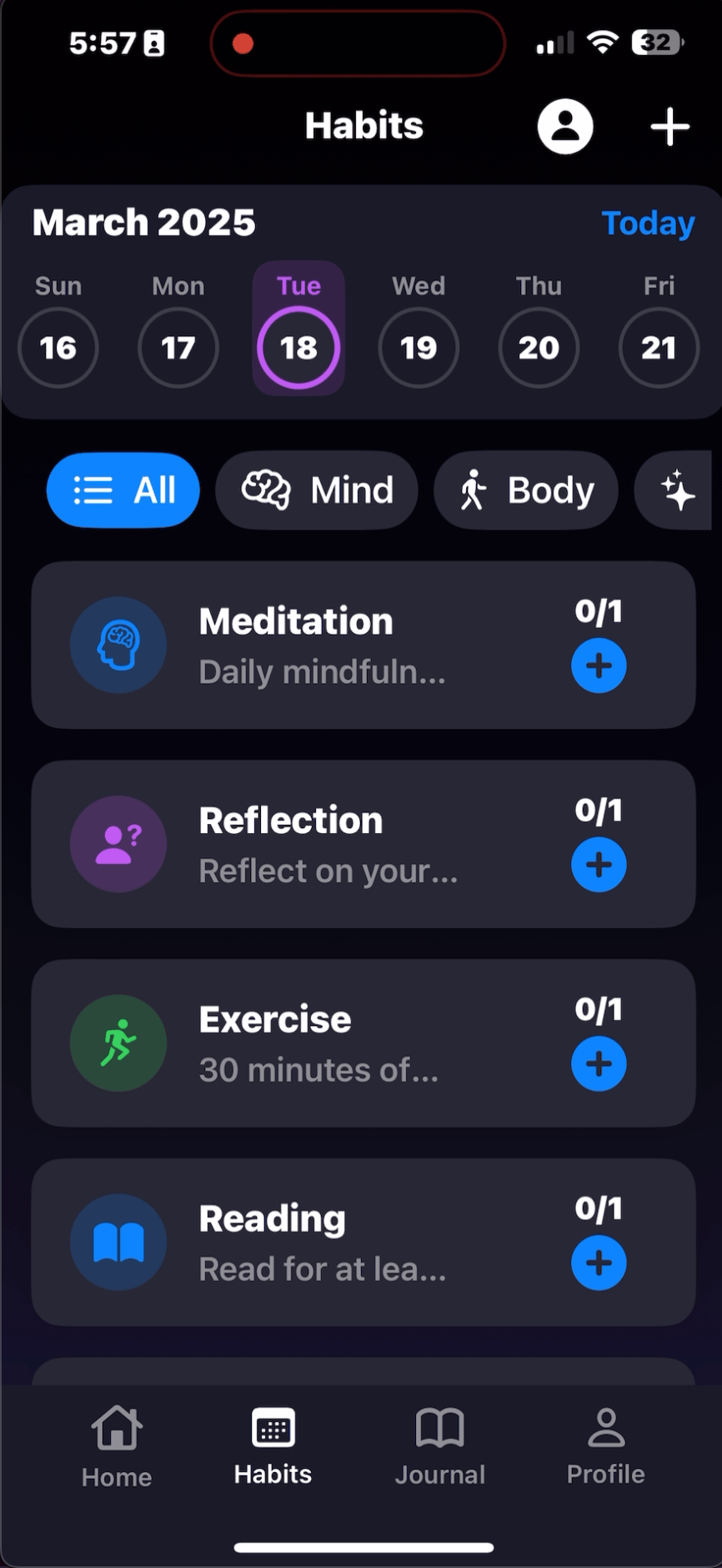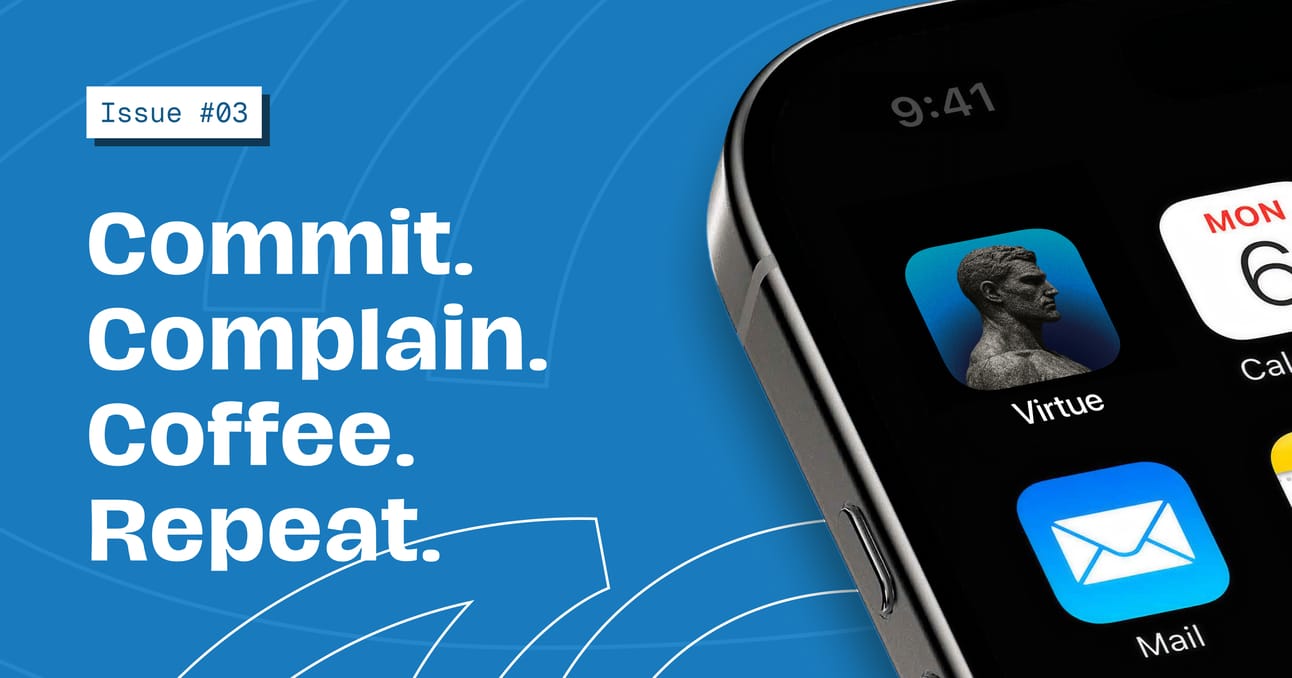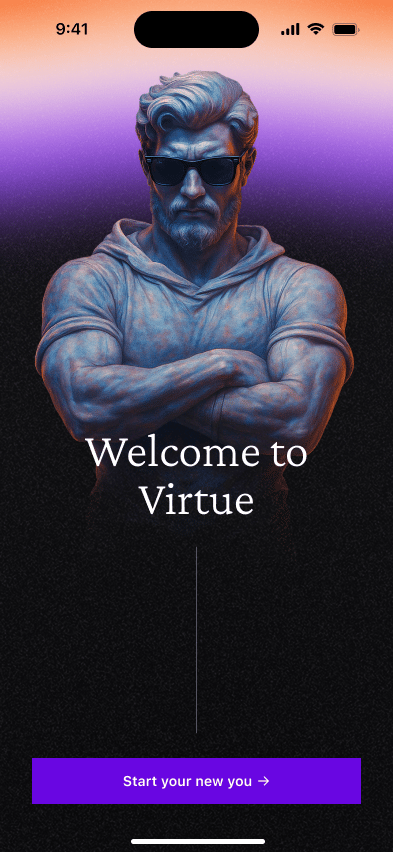Designing vs. Building (Spoiler: Both Are Hard)
We're now officially in week two of our 30-day Virtue build. While the newsletter metrics keep climbing (64.29% open rate on Issue #2!), we've been deep in the trenches balancing design refinement with actual implementation.
|
D.B. Fresh
|
|
A Quick Note About D.B. Fresh's Antics
In our last issue, D.B. Fresh hid a not-so-subtle poll in the newsletter that several of you found. For those who missed it, he's hiding another one somewhere in this issue. Keep your eyes peeled for something that looks out of place - it's his way of recruiting for what he calls "The Initiated."
We're still not entirely sure what he's up to, but he seems harmless. Mostly.
Design Evolution: Finding Our Aesthetic
After the accidental Nike-to-Roman evolution we shared last time, we've finally landed on our design aesthetic:
The high-contrast approach with textured backgrounds, clean typography, and that distinctive purple accent is now our north star. With this locked in, we can accelerate designing the rest of the experience.
But as any product team knows, designing is only half the battle.
The Implementation Reality Check
Alan's been in the trenches this week trying to match implementation with design - a process that's always an uphill battle. The radial gradient on our onboarding screens has many subtle layers that elevate the experience, but creating gradients that closely match the design is time-consuming and involves plenty of trial and error.
Interestingly, these challenges have sparked unexpected innovation. Alan built a dynamic gradient tool that lets us visually adjust gradients at runtime to match designs without recompiling. What started as a pain point could eventually become an open-source tool that helps with branding and attracts talent—a perfect example of how constraints force creative solutions.
This is the kind of unexpected side quest that emerges during real product development - solving problems that were never on the roadmap but end up becoming valuable assets.
Functional Before Beautiful
While we refine the visuals, Alan has built out the habits model with a stock UI for testing:

Only place is up from here
It's not pretty (yet), but it allows us to test if we're directionally right in how we're thinking about habits and tasks. The content, visuals, and overall aesthetic will change wildly, but we need to validate the core functionality first.
This is a classic example of the build/measure/learn loop happening in real-time. We could spend weeks perfecting the UI, but if the underlying model doesn't resonate with users, it would all be wasted effort.
Balancing Product Building with Ecosystem Building
We're heading to Seed the South this Tuesday and Wednesday! This presents another common startup dilemma:
Every hour we spend connecting with other founders and partners in the southeast is an hour we aren't building Virtue. But building in isolation isn't sustainable either.
So we'll be there with laptops in hand, finding quiet corners between conversations to keep the momentum going. The 30-day timer doesn't stop for networking events.
|
D.B. Fresh
|
|
What's Next: The Road to Issue #4
Between now and Friday, we'll be:
Testing our habit model with early users
Designing the habit completion and progress visualization screens
Networking at Seed the South while still pushing code
Finishing up a landing page for Virtue
Try Virtue for iOS
We're still actively looking for iOS testers! Reply to this email and let us know if you’re interested.
Your feedback during this crucial formation stage is invaluable - it’s no joke to say that it’s shaping the app in real-time.
Help Us Build in Public
Finding this valuable? Forward it to someone who might appreciate the unfiltered journey of building products. The more perspectives we have, the better Virtue becomes.
Talk to you all on Friday,
— Colin, Alan & The Torta Studios Team
P.S. What's the biggest gap you've experienced between design and implementation? We'd love to hear your war stories as we navigate our own.


